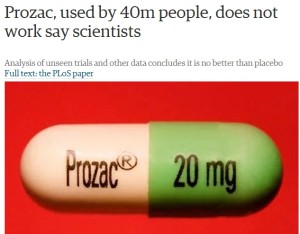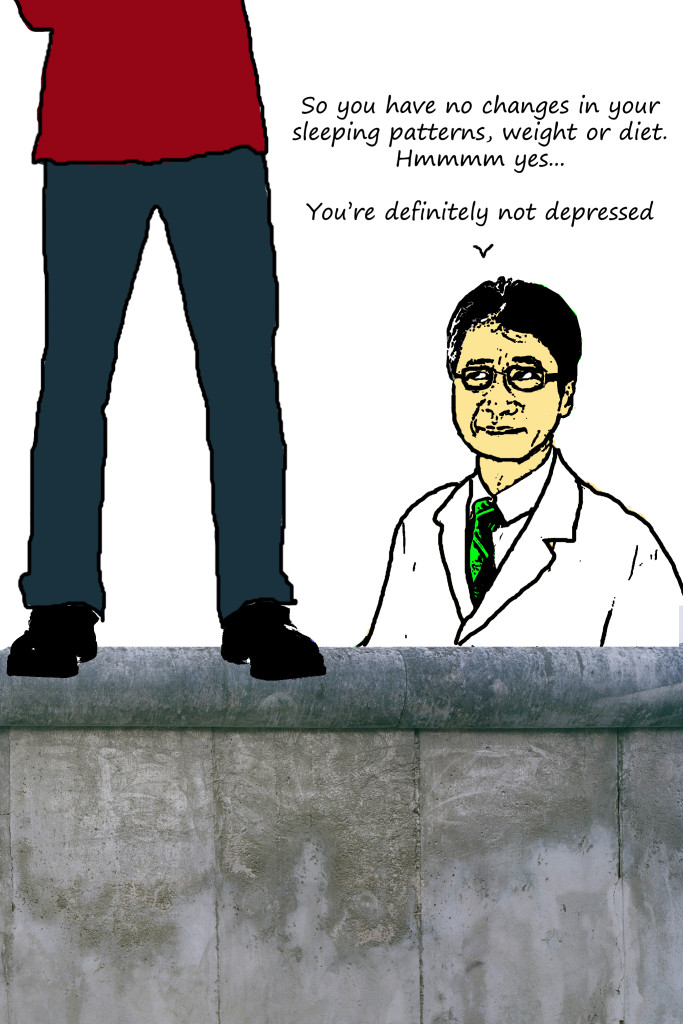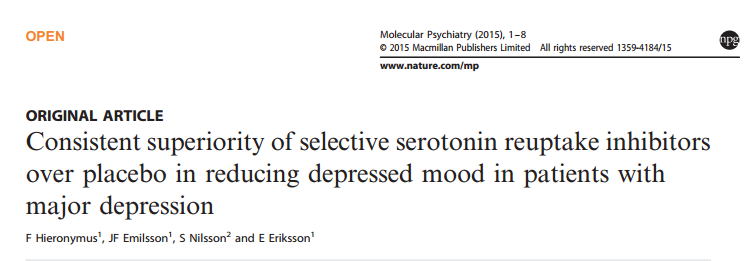Antidepressants do work. How the obvious got blurred by too many boxes to tick
This week I’ve got a darker blog for everyone (sorry). But I had to post it because gosh darn I hate ticking boxes and I really hate it when people create more boxes to tick than what is necessary. And this is the ultimate story of unnecessary box ticking leading us down the wrong path.
Over the years there has been building evidence that the most common antidepressants called SSRIs (which include drugs like Prosac) don’t actually work. Studies like this (1) have lead to tabloid headlines like this.
Don’t get your science from the news…..ever http://www.theguardian.com/society/2008/feb/26/mentalhealth.medicalresearch
This has undermined the trust depression sufferers have in drugs which, despite what some researchers have shown, actually do work. But where did it all go wrong? If you aren’t into reading I’ve put a short partial answer to this question in cartoon format. The long (but still interesting, I promise!) answer continues below.
Some brain cells produce a neurochemical called serotonin and as mentioned before (in this blog about licking toads) serotonin does a lot of things and one of these is modulate your mood. Selective Serotonin Reuptake Inhibitors (SSRIs) increase serotonin signalling in the brain by, yip you guessed it, inhibiting the reuptake of it. They were found to be effective in treating depression and more recently anxiety. Then, slowly, study after study, showed reduced effect sizes i.e. they weren’t working as well as originally thought, until eventually studies started to show that they didn’t work at all! What had changed?
One thing was how we measured depression. The original studies used the Hamilton Rating Scale for Depression (HRSD ) 7 or the HRSD 17, these rating scales got you to score 7 (or 17) symptoms each on different scales (often 0-2 or 0-4). Essentially the patient is evaluated by a person who goes down a sheet ticking boxes and then adding up your score. If you had a score of over 12 (or 20) you were considered to have moderate depression. These 7 things included depressed mood, anxiety and suicidal thoughts. But more versions of the HRSD came out including the HRSD 21, HRSD 24 and the massive HRSD 29.
The HRSD 29 has a bunch of extra categories such as carbohydrate craving, social withdrawal and afternoon sleepiness. MORE DARN BOXES TO TICK. It also put greater emphasis on some existing categories, such as the HRSD 29 placing 15% of its emphasis on weight change and diet, whilst the HRSD 17 only places ~5%. These new categories and shifting emphasis are at least part of the explanation for the apparent failing of SSRIs. You see, things like carbohydrate craving and weight change expand the definition of depression, perhaps well beyond the key features of the disease. These symptoms may apply to many people with depression but not all. A great new paper lays some straight talk on all this HRSD fancy pants scoring (2).
This paper said hey what if people respond to depression differently, some get hypochondria, some eat lots, some don’t eat, some sleep more, some don’t sleep and perhaps carbs have very little to do with depression. So because everyone responds differently to depression why don’t we ignore all the associated symptoms of depression and just look at two main categories in the HRSD – depressed mood and anxiety. Doing this they looked at all the previous good (double blinded) clinical studies on SSRIs (32 in total) and after averaging all these studies (of more than 6600 people) they found that ratings of depressed mood and anxiety had dropped in the SSRI treated group by ~44% and ~30%, respectively. The drugs worked. But by looking at things only loosely associated to the disease other research groups either missed or diluted out the actual effect of drugs and came to the incorrect conclusion that SSRIs don’t work. This research even suggests the HRSD 17 has too many boxes to tick and a new HRSD 2 needs to be created with just depressed mood and anxiety being rated.
Take weight loss as an example, on a scale of 0-3 the 6600+ depressed patients had an average score of 0.6. Meaning most depression sufferers either did not lose weight (scored 0) or scored low in the weight loss scale. So unsurprising the SSRIs had no effect on this score. This suggests that the extra box ticks were worse than useless for assessing depression because how could a depression treating drug effect a symptom which isn’t actually associated with the disease?
There are a number of other factors that almost led SSRIs to have the same fate as ol’ yeller. Such as the over prescribing of SSRIs to people who may not suffer from depression which reduces the apparent effect size in population studies because you can’t treat a disease that didn’t exist in a person. But that is a blog for another day. So just take this key message away- if you are a person who creates forms with boxes that require ticking ensure each box is ACTUALLY NECESSARY because people’s happiness and perhaps lives depend on it.
(1) Kirsch I, Deacon BJ, Huedo-Medina TB, Scoboria A, Moore TJ, Johnson BT (2008). Initial Severity and Antidepressant Benefits: A Meta-Analysis of Data Submitted to the Food and Drug Administration. PLoS Medicine 5(2): e45.
(2) Hieronymus F, Emilsson JF, Nilsson S, Eriksson E (2015). Consistent superiority of selective serotonin reuptake inhibitors over placebo in reducing depressed mood in patients with major depression. Molecular Psychiatry.
Note: depression is a disease that can effect anyone. It doesn’t reflect on the person who has it. They don’t need to harden up they need a friend. So be there for them.
http://www.depression.org.nz/
http://www.depressionuk.org/index.shtml










